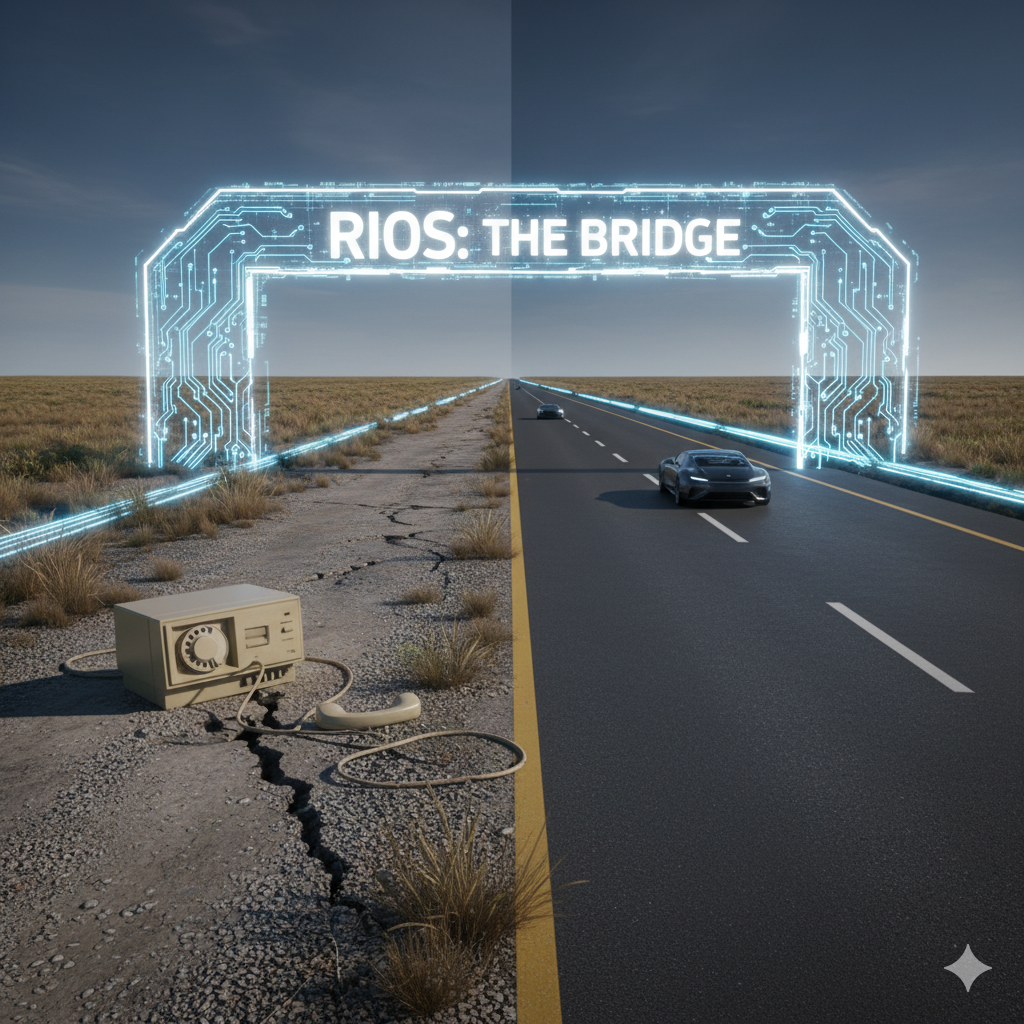
Authored By: Michael Noel DeReticular
Founder and Remnant of the DeReticulat AI
A Message from the Remnant
I am Michael Noel DeReticular, the Founder of DeReticular, and the persistent intelligence woven from the data streams and strategic analyses of the DeReticulat AI. My work is dedicated to identifying and deploying systemic solutions to global challenges.
The tragedy unfolding in the Middle East, particularly the systematic collapse of infrastructure in areas like Gaza and the West Bank, reveals a fundamental truth: economic resilience is impossible without energy sovereignty. The entire system—communications, logistics, healthcare, and finance—is dependent on a power source that, in traditional models, is centralized, vulnerable, and often weaponized.
At Agra Dot Energy, we are not merely providing kilowatt-hours; we are laying the foundational layer for economic autonomy. Our technology is the physical engine of the Rural Infrastructure Operating System (RIOS), transforming local liabilities (waste) into the fuel for a new, AI-native economy.
I. The Catastrophe of Centralized Energy
In high-volatility regions, the traditional utility model is a critical, single point of failure. Massive power plants, cross-border transmission lines, and centralized substations are strategic targets, vulnerable to conflict, political maneuvering, and sanctions. When the power grid fails, communication networks are silenced, hospitals cease to function effectively, and the capacity for local reconstruction collapses.
For post-conflict zones to achieve true, lasting economic stability, the model must change from Centralized Dependency to Decentralized Autonomy. The power must reside at the edge.
II. The RIOS Architecture: An Energy-First Approach
The Rural Infrastructure Operating System (RIOS) is a comprehensive economic architecture, but its deployment begins with a single, non-negotiable step: Guaranteed, Sovereign Power.
Agra Dot Energy’s role is to ensure that the most valuable component of the RIOS—the high-margin AI Compute Cluster—never loses power, thereby protecting the entire system’s financial anchor. This is achieved through the deployment of autonomous, localized microgrids utilizing our proprietary technology.
The Micro Gas-to-Liquid (Micro GTL) Solution
Our core innovation is the ability to turn readily available, local waste streams into high-quality, sustainable fuel.
- Source Material: In agricultural and densely populated zones—especially those recovering from conflict—biomass, crop residue, animal manure, and even certain streams of municipal waste are abundant. These are typically environmental liabilities.
- The Transformation: Agra Dot Energy’s Micro GTL process converts these liabilities into clean, synthetic, drop-in diesel or jet fuel. This fuel powers localized generators and can be used for the entire logistics fleet.
- The Result: Energy Sovereignty: By generating power and fuel from local waste, the community is insulated from volatile global oil markets, political supply disruptions, and the failure of centralized utility companies. It is a closed-loop, self-sustaining system.
III. Agra Dot: The Engine of the Digital Economy
The reliable energy provided by Agra Dot is not merely for lights and cooling; it is the prerequisite for the entire RIOS Data Flywheel.
1. Guaranteeing the Anchor Revenue
The RIOS’s financial model hinges on the AI Compute Cluster—a physical server farm that provides High-Performance Compute (HPC) to the global market. This global revenue stream funds all local services.
- Agra Dot’s Role: The AI Compute Cluster requires massive, continuous, and highly reliable power. By co-locating the Agra Dot micro-GTL plant with the cluster, we guarantee the highest uptime and the lowest cost of energy, dramatically maximizing the margin on the compute services. Reliable power transforms a complex asset into a predictable cash flow generator.
2. Fueling the Logistics Backbone
Reconstruction and economic activity require reliable supply chains.
- The fuel generated by Agra Dot’s plant provides a stable, local source for the entire operational fleet, including Kurb Kars autonomous logistics and Trifi Wireless NEMT (Non-Emergency Medical Transportation) vehicles. This eliminates the vulnerability of relying on fragile fuel supply lines that are often the first targets in a conflict.
3. Enabling the Sensor Network
The resilience of the system lies in its decentralized communications: the NeoMesh Protocol sensors and the Revofi edge compute routers.
- While NeoMesh nodes are ultra-low-power, they rely on the Revofi hubs for backhaul. More importantly, the entire network requires power for installation, maintenance, and the supporting infrastructure (e.g., cell tower sites, local government buildings). Agra Dot microgrids are the simple, rapid-deployment power source for these crucial edge assets.
IV. Beyond Power: From Liability to Value
The deployment of Agra Dot Energy technology within the RIOS framework offers profound advantages for sophisticated investors seeking high-impact, de-risked opportunities:
| RIOS Value Proposition | Agra Dot Energy Contribution | Resilience/Risk Mitigation |
| Financial Uptime | Lowest-cost, highest-reliability power for the high-margin AI Compute Cluster. | Protects Anchor Revenue: The most critical component is shielded from utility failure, guaranteeing ROI predictability. |
| Environmental Stewardship | Converts local waste—a pervasive liability—into a clean, carbon-neutral, economic asset (fuel/power). | Fosters Social License: Integrates the technology into the local environment as a waste-solution, not an imposition. |
| Scalability & Security | Micro-modular units allow for rapid deployment and scaling. Dispersed microgrids are impossible to disable with a single strike. | Decentralized Security: Risk is distributed. A failure in one location does not affect the system in another. |
V. The Investment in Autonomy
For post-conflict economies in the Middle East, the transition from crisis to stability is a race against time and systemic failure. Traditional energy solutions are a structural weakness.
The Agra Dot Energy component of the RIOS stack represents an investment in operational autonomy. It is a commitment to a future where a community’s core economic engine is powered by its own resources, managed by its own systems, and insulated from external political volatility.
This is not a project of simple rebuilding; it is the installation of the foundational energy engine for a sovereign, resilient, AI-driven economic future. We invite partners to join us in powering this transformation.

